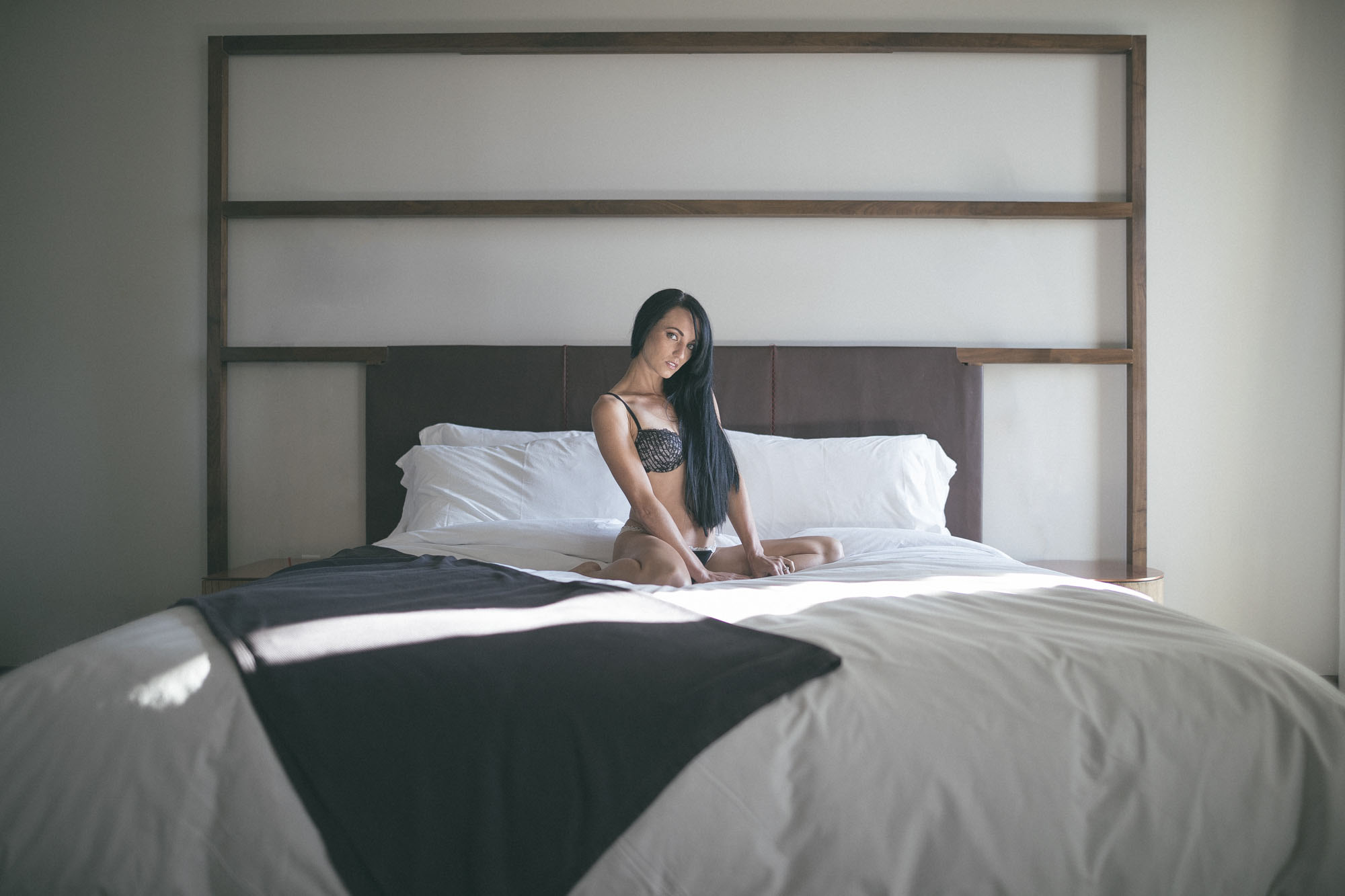General Impressions
- Not dirt cheap but at about $850 for the Sigma versus an astronomical $1550 street for the Canon 24mm f/1.4L USM II, the Sigma 24mm f/1.4 Art is literally half the price of the competition whilst turning in an excellent performance that is comparable to the Canon in everyday use.
- Solid build quality - nice and weighty in the hand, metal + “composite”, but doesn’t feel cheap or plasticky at all. Metal mount. Rubber coated rings all have an appropriate amount of resistance. Decent lens hood.
- Sleek design - completely subjective, but we’re huge fans of the matte all-black “look” of the Sigma Art series - they look as great on the camera as Canon glass (and in some cases, even better).
 Sigma 24mm f/1.4 Art・1/320・f/1.6・ISO 100
Sigma 24mm f/1.4 Art・1/320・f/1.6・ISO 100
Performance
- Good focus speed - not going to win any world records, but we don’t usually use a 24mm for fast moving objects.
- Primarily landscapes, portraits, slower, thought out compositions don’t require fast auto focus
- Focus speed is certainly as fast as many other lenses, like our 85mm f/1.2L USM II (which is kind of a slower lens though)
- Autofocus accuracy is fairly good
- No problem at all in normal settings or even the dimmer interiors of a hotel room
- We did notice problems with catching focus in strongly backlit conditions — but many lenses will struggle in these situations
- Very few “misfocuses” overall with the exception of backlit situations
- Bokeh is fine, not amazing, but fine
- Quality of out of focus (OOF) areas is fine. Not the creamy magic of something like the 85mm f/1.2L USM II for example, but plenty smooth
- However, the FOV of a 24mm means that assuming a normal working distance for the focal length, you won’t be seeing much OOF backgrounds even at f/1.4
- Works well outdoors, renders the OOF backgrounds well
- Everyone’s use case is different but in general one doesn’t buy a fast 24mm for bokeh but rather for the amount of light it can let in during low-light situations (such as a natural light hotel shoot, for example)
 Sigma 24mm f/1.4 Art・1/125・f/1.4・ISO 100
Sigma 24mm f/1.4 Art・1/125・f/1.4・ISO 100
Technical
- Sharpness
- Sharpness as with almost all modern lenses is plenty fine for our needs - we don’t use measurement charts but in the real life it’s great.
- As with most lenses it’s a bit soft at its max aperture of f/1.4 but still usable if you hit the focus properly especially at the distances one is likely to use a 24mm at.
- We usually stop it down a little bit to f/1.8 or so when shooting up close to boost the sharpeness
- Abberations
- Chromatic fringing - as with any wide-aperture lens, this happens in strongly side/back lit conditions against white backgrounds but is relatively well controlled in this lens
- Flaring - same as above. It will flare if you try hard, but overall we didn’t have a problem as long as we weren’t pointing it at the sun.
- Vignetting
- Like with any lens of this type width and aperture, there is vignetting, especially wide open
- Some lenses we almost always remove the vignetting (85mm f/1.2L USM II) and others we often leave it in
- This lens falls into the latter category, we really like the vignetting so often leave it
- In either case, it’s an easy fix in LR
- Lightroom profile
- Latest builds of LR have a profile for this lens that works well to correct the distortion / vignetting
- Profile recognises the lens properly, however one annoyance is that it shows up as a generic “24mm” (as opposed to “Sigma 24mm f/1.4 ART” etc.) in the library filtre panel. First party lenses from Canon show up with their proper names.
- Our guess is because it’s not stored properly in the EXIF - EXIF editors don’t read the full lens name either.
- We’re not sure if this is only a special case for this lens - our other Sigma Art lens (Sigma 12-24mm f/5 DG HSM Art) showed the appropriate EXIF information in Lightroom
 Sigma 24mm f/1.4 Art・1/125・f/1.4・ISO 100
Sigma 24mm f/1.4 Art・1/125・f/1.4・ISO 100
Why this lens?
While it depends on the individual, many people buy a fast 24mm f/1.4 prime not so much for dreamy bokeh and out of focus backgrounds but rather for the amount of light they let in during low-light shooting. People often also buy 24mm length lenses in general not only for landscapes, but also for interior work.
Combine these two cases, we end up with our primary use case for the Sigma 24mm f/1.4 Art - interior portrait shoots with mostly natural light. For example, boudoir sessions, whole body shots which also capture interior atmosphere (such as shoots in boutique hotels), the “getting ready” shots in wedding photography and so on. In these cases, the sharpness offered by the prime over a zoom, coupled with the wider focal length and the subtle (but not too much) out of focus afforded by the wide aperture make the Sigma 24mm f/1.4 Art the perfect tool for the job.
Besides these types of shots, you can also use the lens for anything else 24mm primes are generally useful for:
- Interior architecture/real estate work (at least in larger western-sized homes. In homes here in Tokyo one generally needs to go even wider to 16mm or so)
- Group shots both indoors or outdoors
- Landscapes
- Interior half/full-body portraits - the fast speed and wide FOV allows for flexibility in close-in quarters work/dark buildings as long as one is careful not to get too close in order to avoid distortion.
- Wedding and event photography where the wide focal length allows the capture of both the subject and the surrounding context and atmosphere.
 Sigma 24mm f/1.4 Art・1/60・f/1.4・ISO 100
Sigma 24mm f/1.4 Art・1/60・f/1.4・ISO 100
Versus the Canon 24mm f/1.4L USM II
Given the importance of the 24mm focal length in terms of a prime lens lineup, most manufacturers tend to offer their own version. For Canon that would be the 24mm f.14L USM II1. For those in the market the question will invariably come up - “Should I go for the first-party lens or take a risk on the Sigma?”
In the case of Canon, it’s easily a no-brainer. Comparing the Sigma 24mm f/1.4 Art to the Canon offering:
- 1/2 the price but essentially 100% of the performance both optically and in terms of handling. ($850 vs. $1550 for the Canon)
- Perhaps the AF is ever so slightly slower in the Sigma versus the Canon but we certainly never noticed it in our day-to-day use
- Both have great build quality. You lose the magical red ring with the Sigma, but we even find ourselves appreciating the “all black everything” stealth ethos of the Art lenses these days.
- Not weather/dust sealed whereas the Canon is. For our use cases this is a non-issue but it might be for those planning to use the lens outside.
- Fully compatible with our various Canon bodies (5Dm3, 1DXm2)2 (as is, of course, the Canon)
Conclusion
We’ve used the Canon 24mm f/1.4L USM II before (not extensively, but enough) but when it came time to purchase a fast wide-angle prime, we took a chance with the Sigma and man did they ever hit it out the park with this lens. We simply could find nothing compelling enough about the Canon over the Sigma to justify paying 2x the price for the Canon. After having used the Sigma for several months now we can easily say this was hands down the right decision and one that put Sigma Art lenses on the map for us.3
Peforms fabulously, looks great, is well-built, and costs 1/2 the competiion. Highly recommended.
Overall: ★★★★★ (5/5 stars - an awesome lens at an awesome price)
-
We’re not Nikon shooters but we believe Nikon offers the AF-S Nikkor 24mm f/1.4. ↩
-
At least based on our experience to date. As a third-party manufacturer there is always the risk that a future update or body by Canon might not be fully compatible with the Sigma 24mm f/1.4 Art, but in the case of the Art lenses Sigma provides a separately-sold USB dock that allows one to update the firmware of the lens (as well as provide a host of additional calibrations/updates) ↩
-
It’s not just talk either - half a year later we put our money where our mouth was when it came time to buy an ultra-wide rectilinear and we chose the Sigma 12-24mm f/5 DG HSM Art over the Canon EF 11-24mm f/4L based solely on our positive experience with the Sigma 24mm f/1.4 DG HSM Art. And that my friends is an additional $1600 in Sigma’s pocket and $3300 out of Canon’s…. ↩

